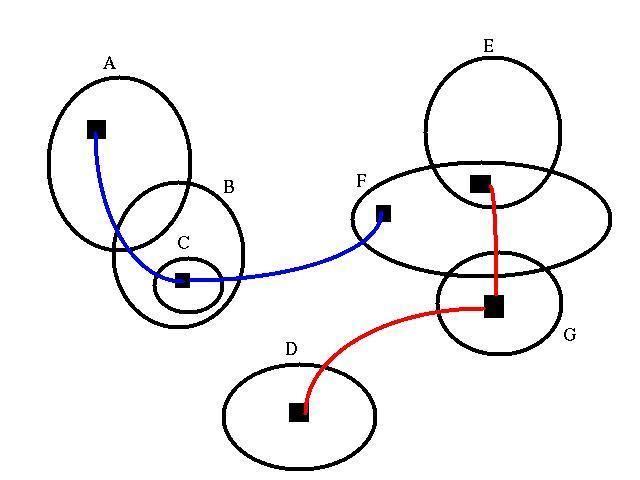 | ||
In mathematics, a unitary spider diagram adds existential points to an Euler or a Venn diagram. The points indicate the existence of an attribute described by the intersection of contours in the Euler diagram. These points may be joined together forming a shape like a spider. Joined points represent an "or" condition, also known as a logical disjunction.
A spider diagram is a boolean expression involving unitary spider diagrams and the logical symbols
Example
In the image shown, the following conjunctions are apparent from the Euler diagram.
In the universe of discourse defined by this Euler diagram, in addition to the conjunctions specified above, all possible sets from A through B and D through G are available separately. The set C is only available as a subset of B. Often, in complicated diagrams, singleton sets and/or conjunctions may be obscured by other set combinations.
The two spiders in the example correspond to the following logical expressions:
